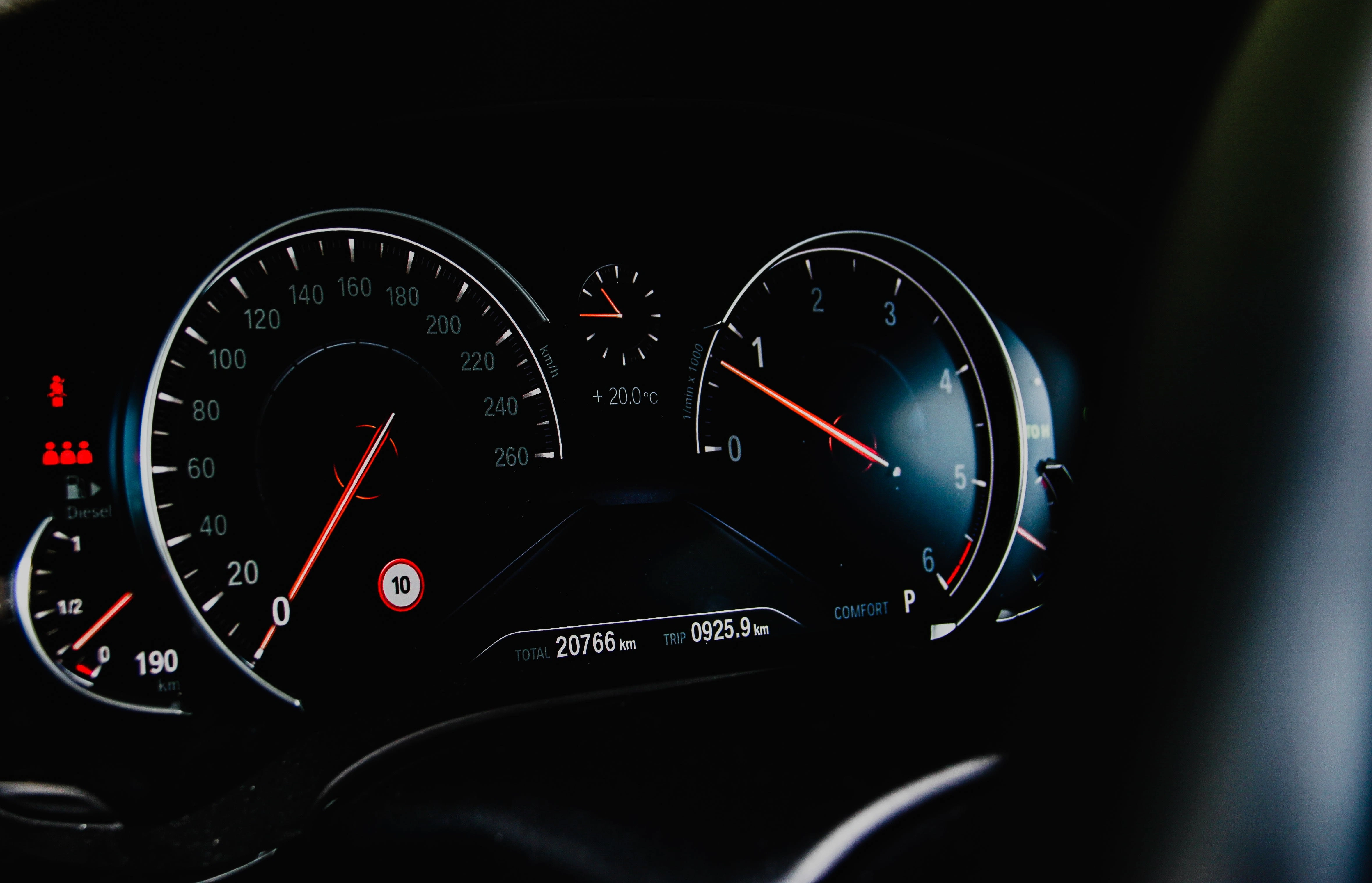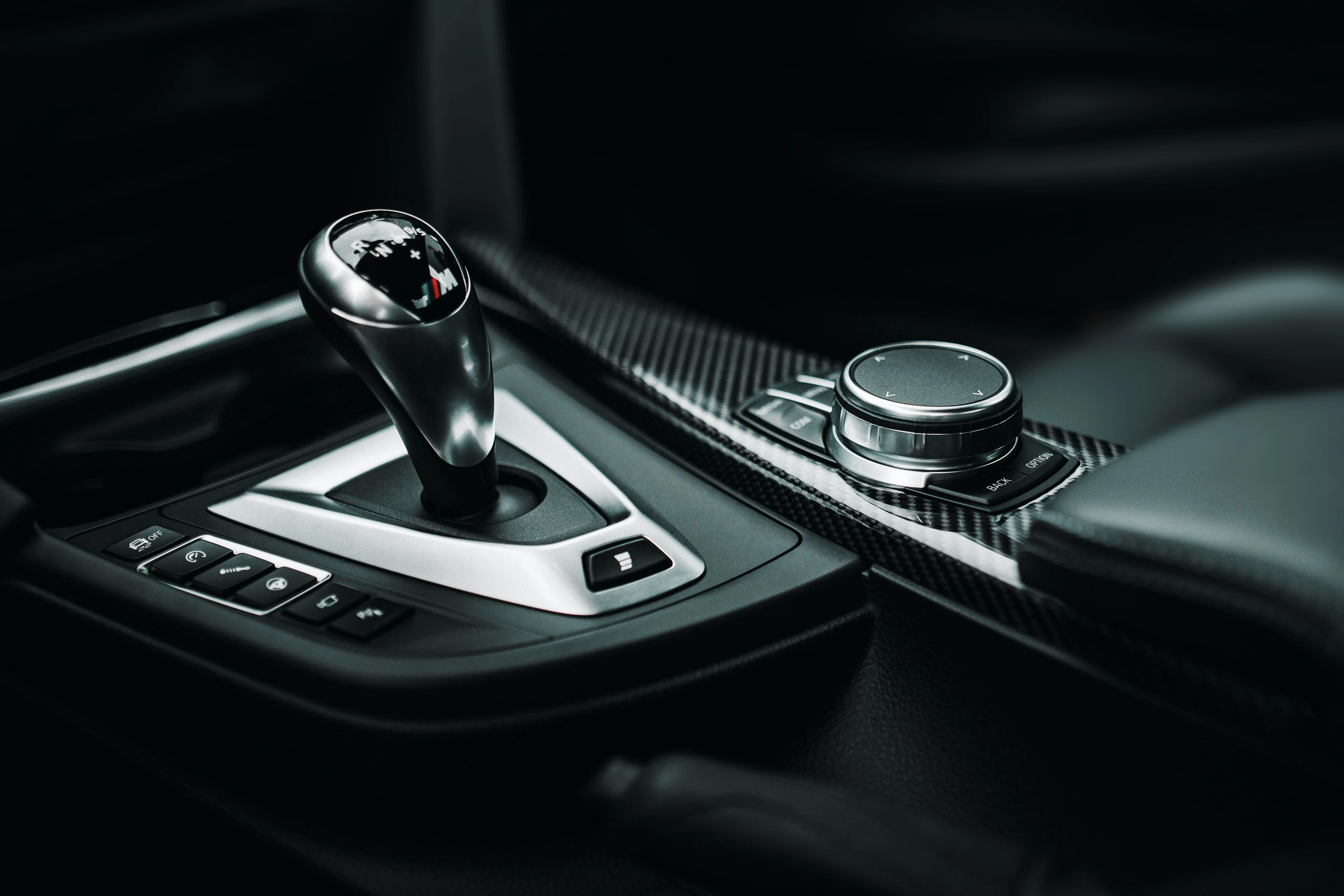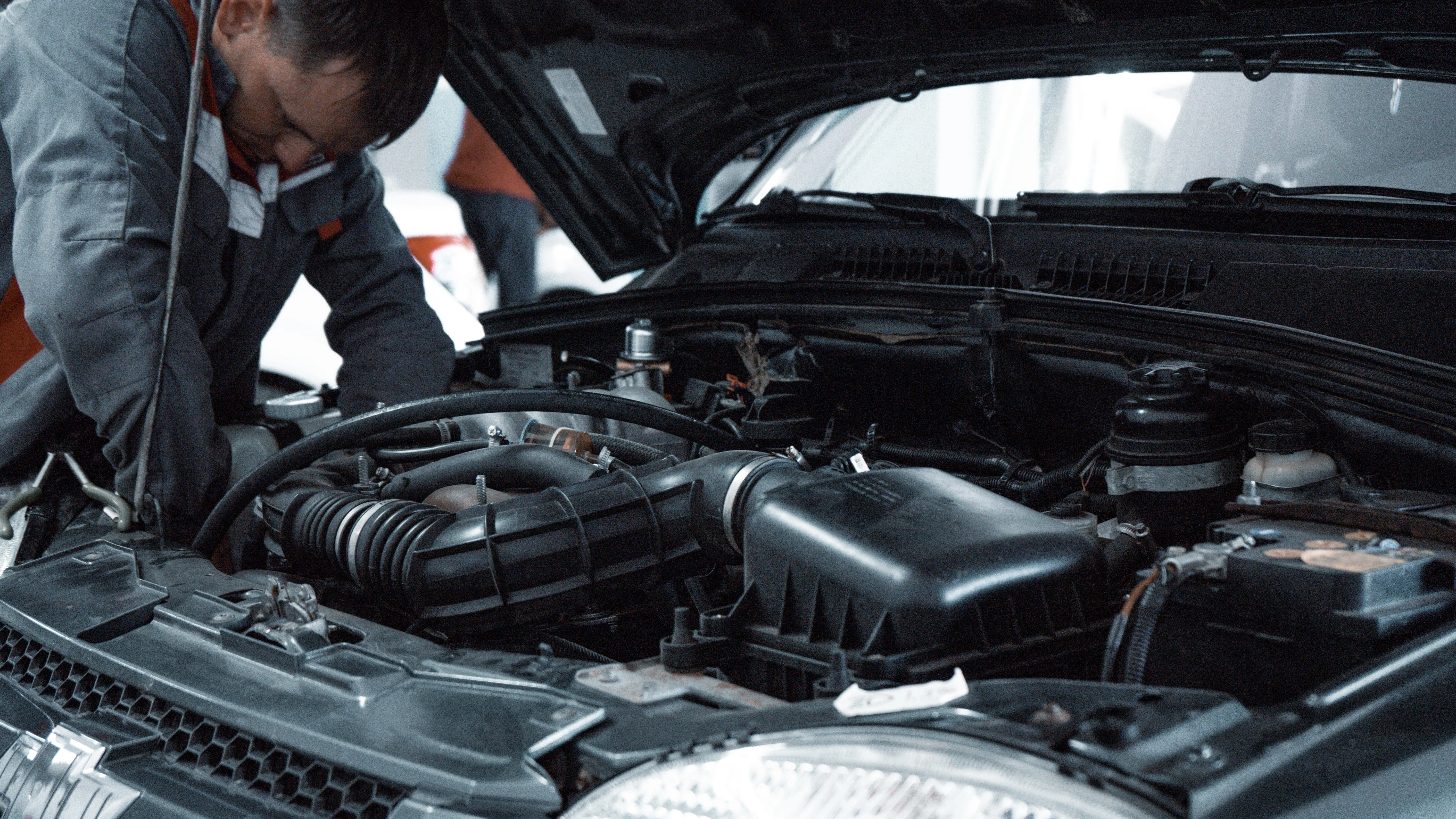Automotive Niche
The Expert's Secret for Finding Your Ideal Used Car Today

Buying a used car can be an exciting and cost-effective option for many individuals. However, it's essential to approach the process with knowledge and caution to ensure you make a smart purchase. This ultimate guide aims to equip you with valuable tips and tricks for buying a used car, helping you navigate the market and make an informed decision. From assessing your needs and researching the market to inspecting the car and negotiating the price, this guide covers everything you need to know.
1. Assessing Your Needs
When considering buying a used car, it's crucial to assess your needs thoroughly. This section will guide you through the key factors to consider during this assessment.
Determining Your Budget
Before you start searching for a used car, determine your budget. Analyze your finances, including your savings and monthly income, to understand how much you can comfortably spend on a car.
Identifying Your Requirements
Identify your specific requirements for the used car. Consider factors such as the car's size, fuel efficiency, safety features, cargo space, and any other preferences you may have.
Considering Ownership Costs
Apart from the initial purchase price, owning a car involves various costs such as insurance, maintenance, and fuel expenses. Take these costs into account while assessing your budget and needs.
2. Researching the Market
Thorough research is crucial to find the right used car that meets your needs and preferences. This section will guide you through the essential steps of researching the market.
Choosing the Right Car
Based on your needs and preferences, research and narrow down the options for used cars that fit your criteria. Consider factors such as make, model, year, mileage, and available features.
Checking Vehicle History
Before making a purchase, obtain the vehicle history report using the car's identification number (VIN). This report provides valuable information about the car's past, including accidents, repairs, and ownership history.
Evaluating Reliability
Look for reliability ratings and reviews of the models you are interested in. Consider factors like long-term durability, common issues, and maintenance requirements to ensure you choose a reliable used car.
3. Finding Reliable Sellers
Finding a trustworthy seller is essential to ensure a smooth and reliable used car buying experience. This section covers the two primary options for finding sellers.
Dealerships
Dealerships offer a wide selection of used cars and often provide warranties and financing options. Research local dealerships and check their reputation and customer reviews before visiting.
Private Sellers
Private sellers can offer competitive prices, but it's essential to approach these transactions cautiously. Insist on meeting the seller in person, ask relevant questions, and request maintenance records to verify the car's condition.

4. Inspecting the Car
Inspecting the car thoroughly is a critical step to avoid purchasing a vehicle with hidden issues. This section provides guidance on the essential aspects to inspect.
Exterior Condition
Check the exterior of the car for any signs of damage, rust, or mismatched paint. Look for consistency in panel gaps and ensure that the car's body is in good condition.
Interior Condition
Inspect the interior of the car for wear and tear, including the seats, carpets, and dashboard. Test all the features and controls to ensure they are functioning correctly.
Mechanical Inspection
Consider hiring a qualified mechanic to perform a thorough mechanical inspection of the car. They can identify any underlying issues that may not be apparent during a visual inspection.
5. Negotiating the Price
Negotiating the price is an important part of buying a used car and can save you money. This section provides strategies for effective negotiation.
Setting a Target Price
Determine the maximum price you are willing to pay for the used car based on your budget and the research you conducted. This target price will serve as a reference during negotiations.
Gathering Price Information
Collect information on similar cars in the market to understand their prices. Online resources, local listings, and dealerships can provide valuable insights into the fair market value of the car you are interested in.
Negotiation Strategies
Use negotiation techniques such as starting with a lower offer, emphasizing any issues discovered during the inspection, or leveraging competing offers to negotiate a better price.
6. Completing the Purchase
Once you've negotiated the price and reached an agreement, it's time to complete the purchase. This section outlines the final steps involved in buying a used car.
Reviewing Legal Documents
Thoroughly review and understand all the legal documents involved in the purchase, including the bill of sale, title transfer, and warranty (if applicable). Seek legal advice if necessary.
Ensuring Proper Documentation
Ensure that all the necessary paperwork is completed accurately. This includes registration, insurance, and any applicable transfer of ownership documents.
Conclusion
Buying a used car can be a rewarding experience when approached with knowledge and caution. By following the tips and tricks outlined in this ultimate guide, you'll be well-equipped to make a smart purchase decision that aligns with your needs, budget, and preferences.
FAQs
1. Is buying a used car a good idea?
Buying a used car can be a great idea, especially when you consider factors like cost savings and a wide variety of options available in the market. However, it's crucial to do thorough research and inspections to ensure you're making a smart purchase.
2. How can I determine the fair price for a used car?
To determine the fair price for a used car, research the market and gather information on similar models, their conditions, and their prices. You can use online resources, local listings, and dealerships to get insights into the pricing trends.
3. Should I buy from a dealership or a private seller?
Both dealerships and private sellers have their advantages and considerations. Dealerships offer a wider selection, financing options, and often provide warranties. On the other hand, private sellers may offer lower prices but require extra caution. Consider your preferences and conduct due diligence before making a choice.
4. What should I look for during a test drive?
During a test drive, pay attention to the car's handling, braking, acceleration, and any unusual sounds or vibrations. Test all the features and controls to ensure they are functioning correctly. It's also a good opportunity to assess the comfort and fit of the car for your needs.
5. Can I negotiate the price of a used car?
Yes, negotiating the price of a used car is common and often expected. Research the fair market value, set a target price based on your budget, and use effective negotiation strategies to get the best deal possible.
What Your Car Mechanic Doesn't Want You to Know

When it comes to cars, most people enjoy the thrill of driving, but not everyone understands what happens under the hood. Car mechanics is a complex field that involves various systems working together to make your vehicle run smoothly. Whether you're a car enthusiast or a new driver, having a basic understanding of car mechanics can help you make informed decisions, troubleshoot issues, and ensure proper maintenance. In this comprehensive guide, we will explore the fundamental aspects of car mechanics and delve into the intricacies of different systems.
The Basics of Car Mechanics
Understanding the Internal Combustion Engine
The heart of a car is its internal combustion engine. This mechanical marvel converts the energy stored in fuel into the mechanical power needed to propel the vehicle. By combusting a mixture of air and fuel, the engine generates controlled explosions that drive the pistons up and down in the cylinders.
The Role of Pistons, Cylinders, and Crankshafts
Pistons play a crucial role in the engine's operation. These cylindrical components move up and down inside the cylinders, converting the force of the explosions into linear motion. Connected to the pistons, the crankshaft transforms this linear motion into rotational motion, providing power to the transmission.
Fuel Injection Systems and Carburetors
Fuel injection systems and carburetors are responsible for delivering the right amount of fuel to the engine. Carburetors mix air and fuel manually, while fuel injection systems atomize fuel electronically. Understanding the differences between these systems helps optimize engine performance and fuel efficiency.
Ignition Systems and Spark Plugs
Ignition systems ignite the air-fuel mixture within the engine cylinders. Spark plugs create sparks that ignite the mixture, initiating the combustion process. Proper maintenance of spark plugs ensures reliable engine performance and fuel economy.
Lubrication and Cooling Systems
Engines generate significant heat and friction, making lubrication and cooling crucial. Engine oil lubricates moving parts, reducing wear and tear. The cooling system, comprising a radiator and coolant, prevents the engine from overheating.
Transmission and Powertrain
Manual vs. Automatic Transmissions
Transmissions transfer power from the engine to the wheels. Manual transmissions require the driver to shift gears manually, while automatic transmissions do this automatically. Understanding the differences helps drivers make informed decisions based on their preferences and driving conditions.
Clutches, Flywheels, and Torque Converters
In manual transmissions, the clutch engages and disengages the engine from the transmission. Flywheels provide inertia to smoothen engine power delivery. In automatic transmissions, torque converters perform a similar function, allowing the engine to idle while the vehicle is at a stop.
Differential and Drive Shafts
The differential enables the wheels to rotate at different speeds when turning. Drive shafts transmit power from the transmission to the wheels. Understanding these components helps comprehend how power is distributed to the wheels and the impact on vehicle handling.
Understanding Gears and Gear Ratios
Gears and gear ratios determine how much power is transmitted from the engine to the wheels. Different gear ratios are suitable for varying driving conditions, providing the necessary torque or speed. Understanding gear ratios aids in optimizing vehicle performance and fuel efficiency.

Suspension and Steering Systems
The Function of Suspension Systems
Suspension systems ensure a smooth and comfortable ride by absorbing shocks and vibrations from the road. They also help maintain tire contact with the road surface, improving traction and handling. Understanding suspension systems enhances driving comfort and safety.
Types of Suspension Systems
Various types of suspension systems exist, including independent, dependent, and semi-independent systems. Each system has its advantages and characteristics. Knowing the differences can assist in selecting a vehicle that meets specific driving needs.
Shock Absorbers and Struts
Shock absorbers and struts are vital components of suspension systems. They dampen the vibrations and movements of the springs, providing a smoother ride and improving vehicle stability. Proper maintenance of these components ensures optimal suspension performance.
Steering Mechanisms and Components
Steering systems enable drivers to control the direction of their vehicles. Components such as steering racks, tie rods, and power steering pumps work together to transmit driver input to the wheels. Understanding steering systems aids in diagnosing and fixing steering-related issues.
Braking Systems
Brake Components and Operation
Braking systems are responsible for slowing down and stopping the vehicle. Components such as brake pads, rotors, calipers, and brake lines work together to convert kinetic energy into heat energy. Understanding the brake system's operation ensures safe braking performance.
Types of Braking Systems
Different types of braking systems, such as disc brakes and drum brakes, exist in modern vehicles. Each system has its advantages and limitations, making it essential to understand their characteristics to make informed choices.
Disc Brakes vs. Drum Brakes
Disc brakes and drum brakes differ in their design and operation. Disc brakes offer better stopping power and cooling capabilities, while drum brakes are generally more cost-effective. Understanding the differences helps drivers choose the appropriate braking system for their needs.
Anti-lock Braking System (ABS)
The anti-lock braking system prevents wheels from locking up during hard braking, improving control and stability. ABS uses sensors and a control module to modulate brake pressure automatically. Knowing how ABS works enhances driving safety.
Electrical Systems
Batteries and Charging Systems
Batteries provide electrical power to start the engine and run various electrical components. Charging systems, including alternators, recharge the battery while the engine is running. Understanding the electrical system helps diagnose and troubleshoot electrical issues.
Starter Motors and Alternators
Starter motors crank the engine during the starting process, while alternators generate electrical power to recharge the battery and operate electrical systems. Maintaining these components ensures reliable starting and electrical performance.
Wiring and Electronics
Wiring connects various electrical components within the vehicle, allowing them to communicate and function together. Understanding the wiring system and electronic modules helps diagnose and repair electrical problems.
Troubleshooting Electrical Issues
Electrical problems can be frustrating. Understanding common electrical issues, such as blown fuses, loose connections, and faulty grounds, can help diagnose and resolve them effectively. It's important to exercise caution when working with electrical systems to prevent injury or damage.

Understanding Fluids and Filters
Engine Oil and Filters
Engine oil lubricates and protects the engine's moving parts. Regular oil changes and filter replacements ensure optimal engine performance and longevity. Understanding the different types of oil and filters aids in maintaining the engine's health.
Coolant and Radiators
Coolant, also known as antifreeze, prevents the engine from overheating. Radiators help dissipate heat from the coolant. Regular coolant checks and radiator maintenance are essential to prevent engine damage due to overheating.
Transmission Fluid and Filters
Transmission fluid lubricates and cools the transmission. Regular fluid changes and filter replacements help maintain smooth gear shifting and extend transmission life. Understanding transmission fluid properties and filter maintenance is crucial.
Brake Fluid and Filters
Brake fluid transfers force from the brake pedal to the braking system. Regular checks and fluid replacements ensure reliable braking performance. Understanding the importance of brake fluid quality and filter maintenance promotes driving safety.
Regular Maintenance and Inspections
Oil Changes and Fluid Checks
Regular oil changes and fluid checks are essential for maintaining engine health. Following the manufacturer's recommendations for oil change intervals and fluid level inspections helps prevent premature wear and damage.
Tire Maintenance and Rotation
Proper tire maintenance, including regular pressure checks, tread inspections, and rotations, ensures optimal tire performance and prolongs their lifespan. Understanding tire maintenance practices contributes to driving safety and fuel efficiency.
Timing Belt and Serpentine Belt Replacements
Timing belts and serpentine belts transmit power between engine components. Regular replacements based on manufacturer recommendations prevent belt failure and costly engine damage. Knowing the recommended replacement intervals is crucial.
Filter Replacements and Tune-Ups
Air filters, fuel filters, and other filters trap contaminants, preventing them from entering critical engine systems. Regular filter replacements, along with tune-ups that include spark plug and ignition system checks, optimize engine performance.
Common Car Problems and Solutions
Overheating and Cooling Issues
Overheating and cooling problems can stem from various issues, such as coolant leaks, faulty thermostats, or radiator problems. Understanding common causes and troubleshooting steps helps resolve these problems promptly.
Engine Misfires and Ignition Problems
Engine misfires and ignition issues can result from spark plug problems, fuel delivery issues, or sensor malfunctions. Diagnosing and addressing these issues promptly can prevent further damage and ensure optimal engine performance.
Transmission Troubles and Slippage
Transmission problems, such as slipping gears or rough shifting, can arise due to low fluid levels, worn clutches, or solenoid issues. Recognizing common symptoms and seeking professional assistance can prevent costly repairs.
Brake Problems and Noise
Brake problems, including squealing brakes or reduced braking power, may indicate worn brake pads, damaged rotors, or other issues. Prompt inspection and repair are necessary to maintain safe braking performance.
Conclusion
Understanding car mechanics is essential for anyone who wants to go beyond being just a driver. This comprehensive guide has provided an overview of the various systems that make up a car and the key concepts related to car mechanics. By grasping these fundamental principles, you can make informed decisions, perform regular maintenance, and troubleshoot common issues, ensuring a safe and reliable driving experience.
FAQs
1. How often should I change my engine oil?
Regular oil changes are typically recommended every 5,000 to 7,500 miles, depending on your vehicle and driving conditions. Consult your car's manual or the manufacturer's recommendations for specific guidance.
2. How do I know if my brake pads need replacement?
Brake pads should be replaced when they have worn down to a thickness of around 3 millimeters. Additionally, if you hear squealing or grinding noises while braking, it's a good indication that the pads are worn and need replacement.
3. Why is my car's engine overheating?
Engine overheating can be caused by various factors, including coolant leaks, a malfunctioning thermostat, a faulty radiator, or a failing water pump. It's essential to diagnose and address the underlying cause promptly to prevent engine damage.
4. How often should I rotate my tires?
Tire rotation is typically recommended every 5,000 to 7,500 miles or every six months, depending on your vehicle and tire type. Regular rotation promotes even tire wear and extends their lifespan.
5. Can I replace the timing belt myself?
Replacing the timing belt requires specialized knowledge and tools, and it can be a complex procedure. It's generally recommended to have a professional mechanic perform this task to ensure proper installation and prevent engine damage.
Top 10 Car Maintenance Tips Every Driver Must Know

Car ownership comes with the responsibility of regular maintenance to ensure your vehicle runs smoothly and lasts longer. Proper car maintenance not only improves performance but also enhances safety on the road. In this article, we will discuss ten essential car maintenance tips that every driver should know. By following these tips, you can keep your car in excellent condition and avoid costly repairs down the road.
Tip 1: Regularly Check Fluid Levels
One of the most crucial aspects of car maintenance is regularly checking fluid levels. This includes engine oil, coolant, transmission fluid, brake fluid, and power steering fluid. Low or dirty fluids can cause significant damage to your car's engine or other components. Make it a habit to inspect and top-up fluids as necessary, following the manufacturer's recommendations.
Tip 2: Change Oil and Oil Filter
Regular oil changes are vital to keeping your car's engine running smoothly. Engine oil lubricates the moving parts, reduces friction, and prevents overheating. Over time, oil breaks down and loses its effectiveness, so it's essential to change it at regular intervals, typically every 3,000 to 5,000 miles. Don't forget to replace the oil filter as well to ensure optimal filtration and protection.
Tip 3: Inspect and Replace Filters
Filters, such as the air filter and fuel filter, play a crucial role in maintaining your car's performance. The air filter prevents dirt and debris from entering the engine, while the fuel filter ensures clean fuel reaches the engine. Regularly inspect these filters and replace them as recommended by the manufacturer. Clean filters promote better fuel efficiency and prolong the life of your engine.
Tip 4: Maintain Proper Tire Pressure
Proper tire pressure is not only essential for fuel efficiency but also for your safety on the road. Underinflated tires can lead to decreased handling, increased braking distance, and even tire failure. Conversely, overinflated tires can result in a harsh ride and uneven tire wear. Refer to your car's manual or the sticker inside the driver's door to find the recommended tire pressure and check it regularly.
Tip 5: Rotate and Balance Tires
Uneven tire wear can affect your car's performance and shorten tire lifespans. To ensure even wear, it's crucial to rotate your tires regularly. This means swapping the front and rear tires or moving them diagonally. Additionally, balancing your tires helps distribute weight evenly and prevent vibration. Consider getting a tire rotation and balance every 5,000 to 7,000 miles, or as recommended by the manufacturer.

Tip 6: Check and Replace Worn-Out Belts and Hoses
Belts and hoses play a vital role in the proper functioning of your car's engine and other systems. Over time, these components can wear out, crack, or become loose, leading to potential breakdowns. Regularly inspect the belts for signs of fraying or cracking and replace them if necessary. Similarly, check hoses for leaks or bulges and replace any damaged ones promptly to avoid costly repairs.
Tip 7: Keep the Battery in Good Condition
A well-maintained battery ensures reliable starting power for your vehicle. Check the battery terminals regularly for corrosion and clean them if needed. If your battery is more than three years old or shows signs of weakness, consider having it tested and replaced if necessary. Additionally, ensure that the battery is securely mounted to prevent vibrations that may damage its internal components.
Tip 8: Check and Replace Worn-Out Brake Pads
Brakes are a critical safety component, so it's vital to keep them in optimal condition. Regularly inspect your brake pads for wear and replace them if they have worn down beyond the recommended thickness. Squeaking or grinding noises when braking can be signs of worn-out pads. Maintaining good brake pads and replacing them when necessary ensures your ability to stop safely.
Tip 9: Keep the Exterior and Interior Clean
Regularly cleaning your car's exterior not only keeps it looking great but also protects the paint and prevents corrosion. Wash your car regularly, remove any debris, and apply wax to maintain the shine. Don't forget about the interior—vacuum the carpets, wipe down surfaces, and keep it free from clutter. A clean car is more enjoyable to drive and holds its value better.
Tip 10: Follow the Manufacturer's Maintenance Schedule
Lastly, one of the most important car maintenance tips is to follow the manufacturer's maintenance schedule. Every vehicle has specific service intervals recommended by the manufacturer. These intervals cover various tasks such as inspections, fluid changes, and component replacements. Adhering to the maintenance schedule ensures that your car receives the necessary attention at the right time, maximizing its longevity and performance.
Conclusion
Regular car maintenance is essential for keeping your vehicle in optimal condition and ensuring your safety on the road. By following these ten essential car maintenance tips, you can take proactive steps to prevent breakdowns, improve performance, and extend the lifespan of your car. Remember to check fluid levels, change oil and filters regularly, inspect and replace filters, maintain proper tire pressure, rotate and balance tires, check belts and hoses, keep the battery in good condition, replace worn-out brake pads, keep the exterior and interior clean, and follow the manufacturer's maintenance schedule.
FAQs
1. How often should I check my car's fluid levels? It's recommended to check your car's fluid levels at least once a month, or as advised in your vehicle's manual.
2. Can I change the oil myself, or should I take it to a professional? If you have the necessary knowledge and tools, you can change the oil yourself. However, if you're unsure, it's best to seek professional assistance.
3. How often should I rotate and balance my tires? Tire rotation and balancing should be done every 5,000 to 7,000 miles, or as recommended by your car's manufacturer.
4. What are the signs of worn-out brake pads? Squeaking, grinding, or reduced braking performance are signs that your brake pads may need to be replaced.
5. How often should I follow the manufacturer's maintenance schedule? It's important to follow the manufacturer's maintenance schedule, which typically includes specific service intervals based on time or mileage. Consult your vehicle's manual for guidance.
Like this project
Posted Jul 13, 2023
SEO Blog articles embarking on an exhilarating journey through the fascinating world of cars, motorcycles, and all things automotive.
Likes
0
Views
39








